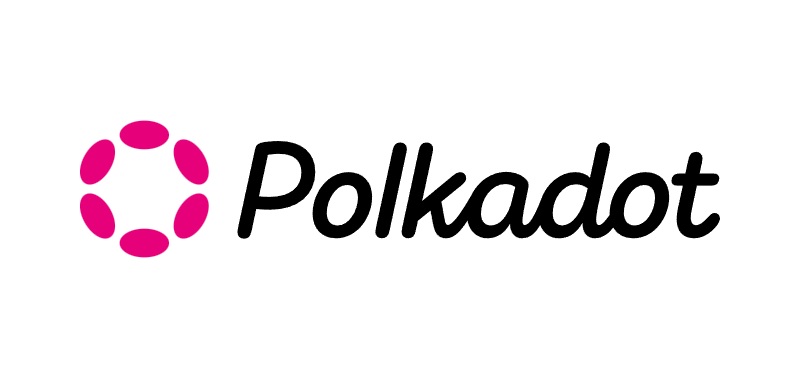What is Polkadot, and how it works?
Polkadot is a digital ledger agreement created to sustain numerous chains within an individual system. It strives to confound an issue in the existing blockchain geography: thousands of blockchains live in seclusion and have small communication capacity.

Polkadot History
Polkadot was designed by Parity system, directed by Gavin Wood and Juta Steiner; two retired Ethereum administrators. The scheme is also reinforced by the Web3 Foundation enterprises, a near-related association that delivers the system with a budget, advocacy, analysis, and teamwork.
Parity was established in early 2015. It started to operate on the node software system for Ethereum and got the Parity Ethereum client. The firm has phased out approval for that task, concentrating on the Polkadot crypto network and corresponding duty, Substrate. Evolution started at the end of 2017 when designers disseminated the preferably regulation on Github.
The firm established two proofs-of-concept in June 2018 and utilized Polkadot’s preferably para chain at the end of July 2018. Polkadot was found in “beginning” circumstances in early 2020, and coin transactions were facilitated in August 2020. As of 2020, Polkadot’s transfer chain has not yet started, and chain auctions are even live.
What Is meant by Polkadot?
As mentioned overhead, Polkadot’s structure is suggested to sustain different chains. It is not simply an individual blockchain that lives in sequestration. There are many benefits to its procedure:
- expandability: Polkadot supports numerous blockchains via a process called “fragment” or para chains. This permits trades to be processed expeditiously and in resemblance.
- Interactiveness: Additional Polkadot para chains and administration can transmit details and functionality appreciations to the project’s interactiveness structure and similarity between chains.
- Domain: Each Polkadot para chain can be modified to a different use issue or utilization.
- Forkless promotions: Polkadot can be elevated without wasting time and schismatic complex separations; new components can be counted without rebuilding the web completely.
Carboniferous and Para chains
Individually chain on Polkadot is contacted a “para chain.” Designers can complete their para chain with carboniferous, a framework for constructing a digital ledger. It is also feasible to conduct blockchains designed with Carboniferous without the existing domain of the Polkadot system; Polkadot only supplies interoperability, agreement, safety, and other benefits for Substrate-based networks.
Parachains can sustain elements located in numerous different digital ledgers, including elegant arrangements, ZK-snarks, network, and UTXO trades, These elements are not an essential element of Polkadot; instead, these components can be counted to and terminated from para chains. Designers can even call processes that live on different para chains.
There are numerous other use possibilities for Polkadot para chains network, counting dealing chains network, prophet chains, originality chains, file storehouse chains network, information curation chains network, IoT chains system, finance chains system, and solitariness chains. Around 25 projects are constructed on Polkadot, with the involvement of, and Ocean Protocol system.
Infrastructure of Polkadot
Para chains are several features that drive up the Polkadot system. Other features contain:
The relay chain network is The major transmission junction between para chains and the “spine” of Polkadot.
- Para chains are Autonomous blockchains on the relay chain network, connected and secured by auction.
- Para threads are a more delicate option to para chains for designers that only like to test Polkadot, delivered underneath a “pay-as-you-go” prototype.
- Bridges: Building blocks and arrangements relate to digital ledgers such as the Bitcoin network and the Ethereum system.
- Further, there are numerous performers in the Polkadot system that support the blockchain functional:
- Validators bet DOT coins, validate evidence from collators, and experience in concurrence.
- Nominators bet DOT coins and connect the relay chain by choosing reliable authenticators.
- Collators are those who manage trades and complete exculpations for validators.
- Anglers are those who observe the system and document opposing action.
The DOT Coin
Polkadot increased almost $150 million by trading its DOT coin in early 2017 ICO. The corporation also directed two remote deals at the end of 2019 and early 2020 and presented an estimated $0.1 billion in those subsequent deals.
Because of a bug in Parity’s Ethereum wallet, almost one-half of the actual ICO coins were frozen. Those frozen coins have not been recuperated, while the failure has not dissembled Polkadot’s function proficiency.
Conclusion
Polkadot is a profitable system. Given that numerous app designers are examining forms to gain a broader audience and provided many additional digital ledgers, the forum could evolve helpful multiple coins. The DOT coin’s high-ranking demand function may also help the project’s importance.
Nevertheless, there are likewise some problems: Polkadot’s problems with token administration and the reality that better conventional venues could determine the scope of the network’s adoption. Polkadot has not previously delivered an “assassin app,” It stays to be noticed whether it will join the limelight above its initial price-related advertising.





